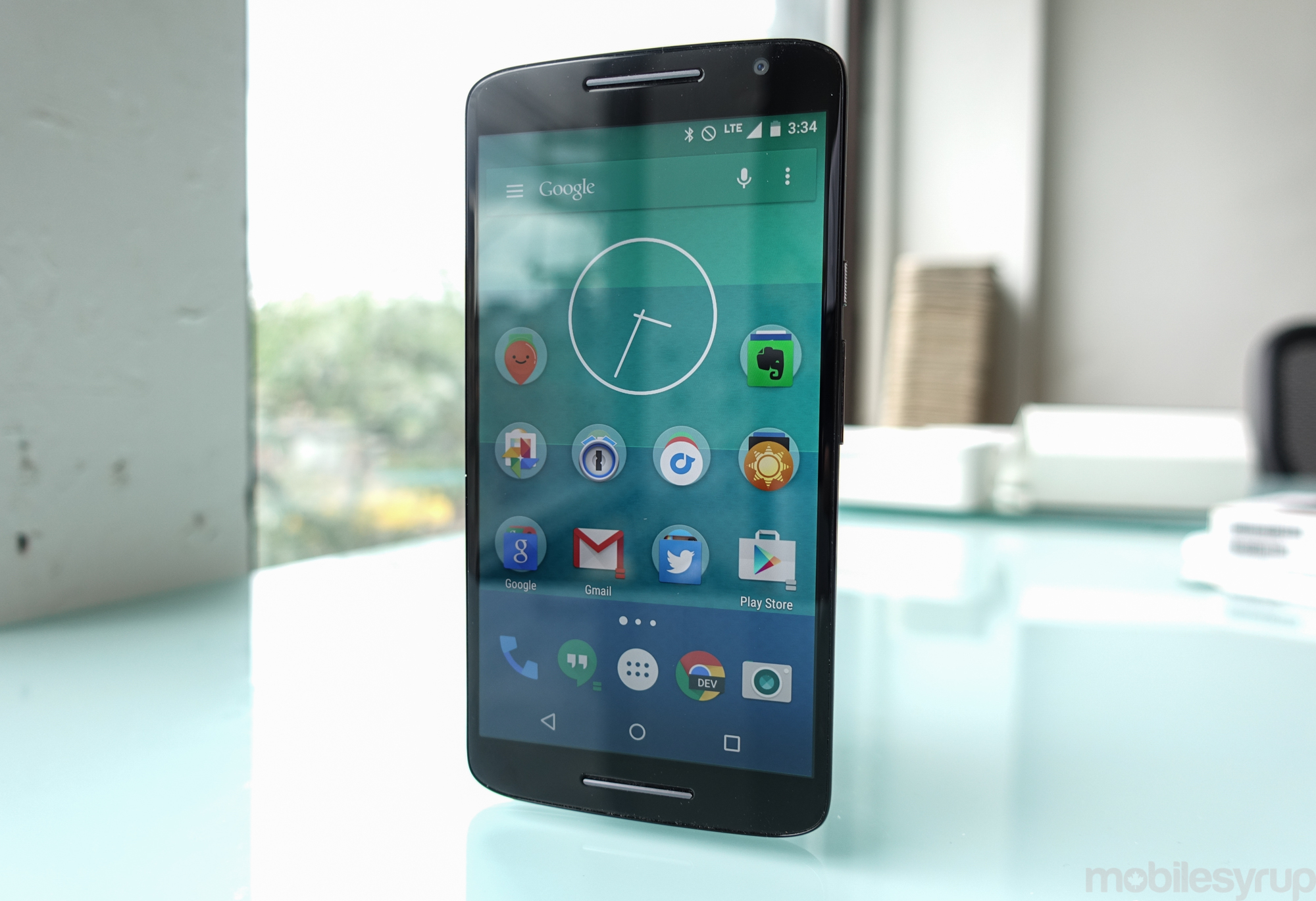
If you think about it, Motorola had to release something like the Moto X Play. The Moto X, that critically-acclaimed but sales-poor flagship, had been reframed as a high-margin player up against the Galaxy S’s and LG G’s of the world to something of a mobile farm team, where new tech was sent to train and improve before moving “south” to the Moto G and E, the company’s true money makers.
That’s not to say that the Moto X has been a failure, but in 2015 even the Galaxy S’s and LG G’s are not selling in volumes their creators would like (and investors need). When Motorola released the second-generation Moto X in September 2014, many critics, including myself, saw it as a capitulation to the masses; bigger, faster, but more generic – more like a Galaxy.
As Motorola shifts its reinvigorated startup culture learned under Google to the massive, continent-spanning reach of Lenovo’s hardware division, cost cutting has already rendered the company’s software division superfluous. But Motorola has been “in transition” for years now, and still manages to churn out focused, competent devices in a variety of prices.
So then why do I feel so betrayed by the Moto X Play? Well, like any great status update, it’s long and complicated.
About this review
This review was written after using an unlocked Motorola Moto X Play on both the Telus and Rogers LTE networks (initially on Telus and then Rogers) for around two weeks.
It was running build LPD23.118-10, with Android 5.1.1.
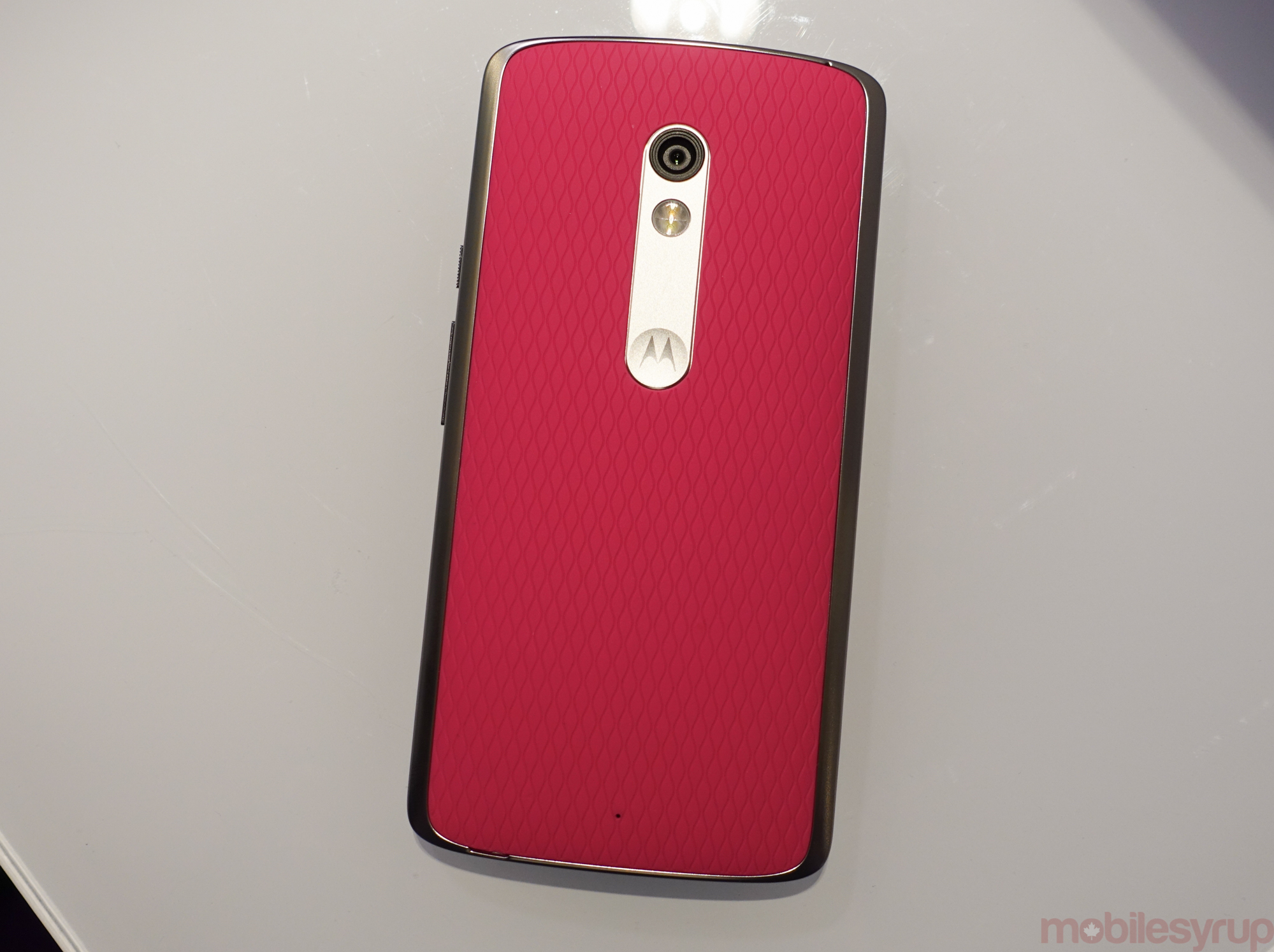
Specs
- Android 5.1.1 Lollipop
- 5.5-inch 1920×1080 pixel LCD display
- Qualcomm Snapdragon 615 octa-core processor (4x Cortex-A53 @ 1.1Ghz, 4x Cortex-A53 @ 1.7Ghz)
- Adreno 405 GPU @ 550Mhz
- 2GB of RAM
- 16GB internal storage with microSD slot (up to 128GB)
- 3,630 mAh battery with Fast Charging
- 21MP rear camera, F2.0 lens, Phase-Detection Autofocus
- 5MP front-facing camera
- WiFi N, Bluetooth 4.0 LE, GPS and NFC
- 148 x 75 x 8.9mm
- 169 grams
- UMTS/HSPA+ (850, 900, 1700 (AWS), 1900, 2100 MHz), 4G LTE (1, 2, 3, 4, 5, 7, 8, 12, 17, 28)
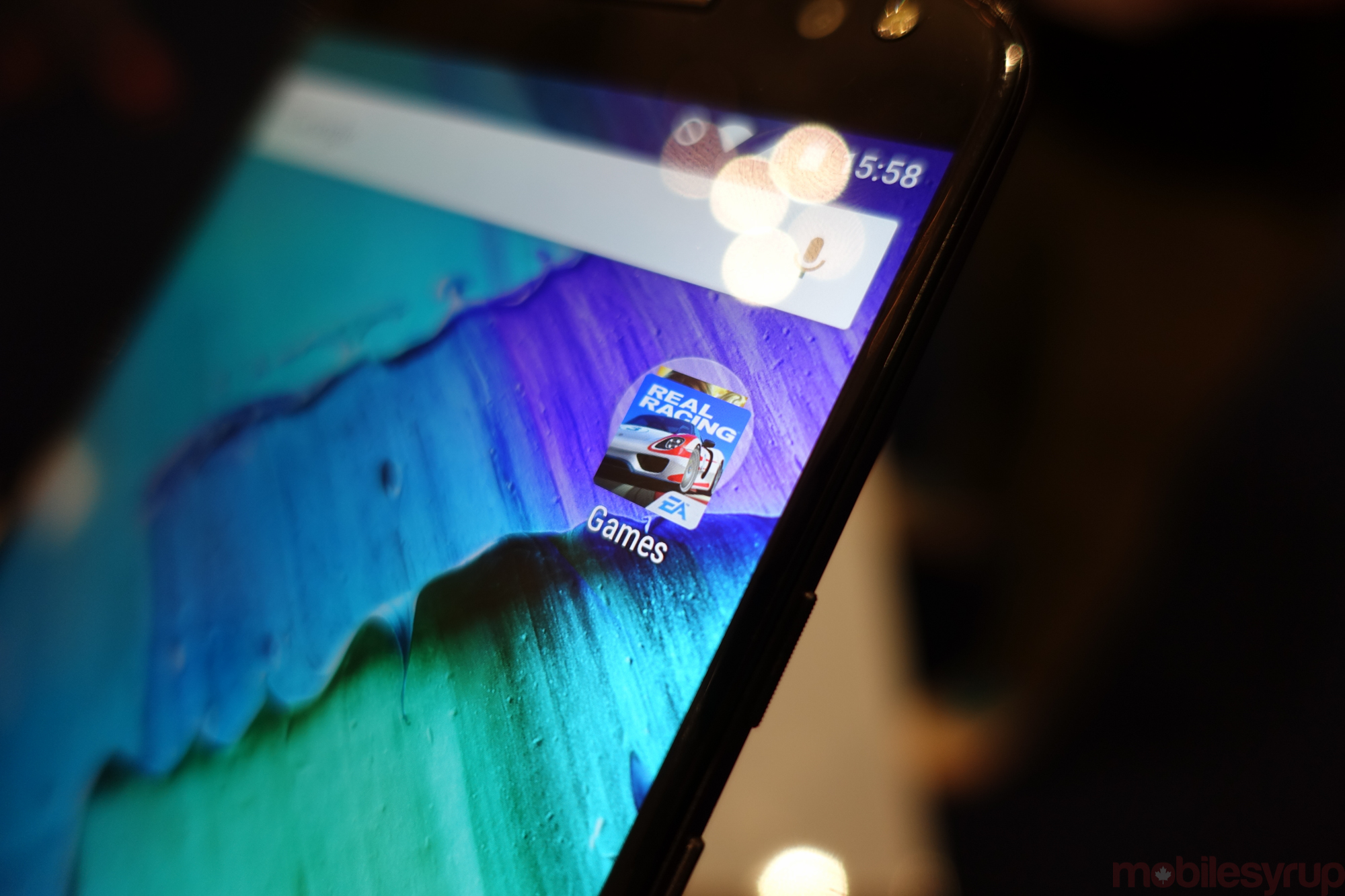
Device and Display
The Moto X Play is both a sequel to last year’s Moto X and a decidedly mid-range smartphone that closely resembles this year’s Moto G. Its 5.5-inch LCD display is both bigger and sharper, but the two models (well, three, if you count the not-coming-to-Canada Moto X Style) were clearly designed in conjunction.
That said, the Play is very much still a Moto, from the curved top to the sloping back, making it comfortable despite its bloating size.
Motorola decided to go with an LCD panel this year, an upgrade in many ways from the 2013-era AMOLED panel in the 2014 Moto X. Though you lose the perfect blacks and overly saturated colours, the Moto X Play makes up for it with improved brightness and viewing angles, and a clean, sharp panel. It’s not going to win any awards, but the Play’s 1080p display is about what you’d expect from a device in this price range: not perfect, but not bad, either.
The worst thing I can say about the panel is that its backlight bleeds a little when viewed from extreme angles. I didn’t notice until I used the device in the dark, but there’s an unevenness to the backlight that is troubling from a company one usually relies on to overcome these sorts of quality issues.

Though it took me a while to figure this out, the Play forgoes the aluminum frame of last year’s Moto X in favour of a metallic resin-covered polycarbonate shell. In practice, it’s a masterful deception, only revealing itself when comparing the two models side by side.
But Motorola cut costs in other more overt areas, too: the power and volume buttons are soft and poorly calibrated, and there’s a clear gap between the Gorilla Glass 3 and the frame, where dust and other muck got vexingly trapped in my short time with the device.
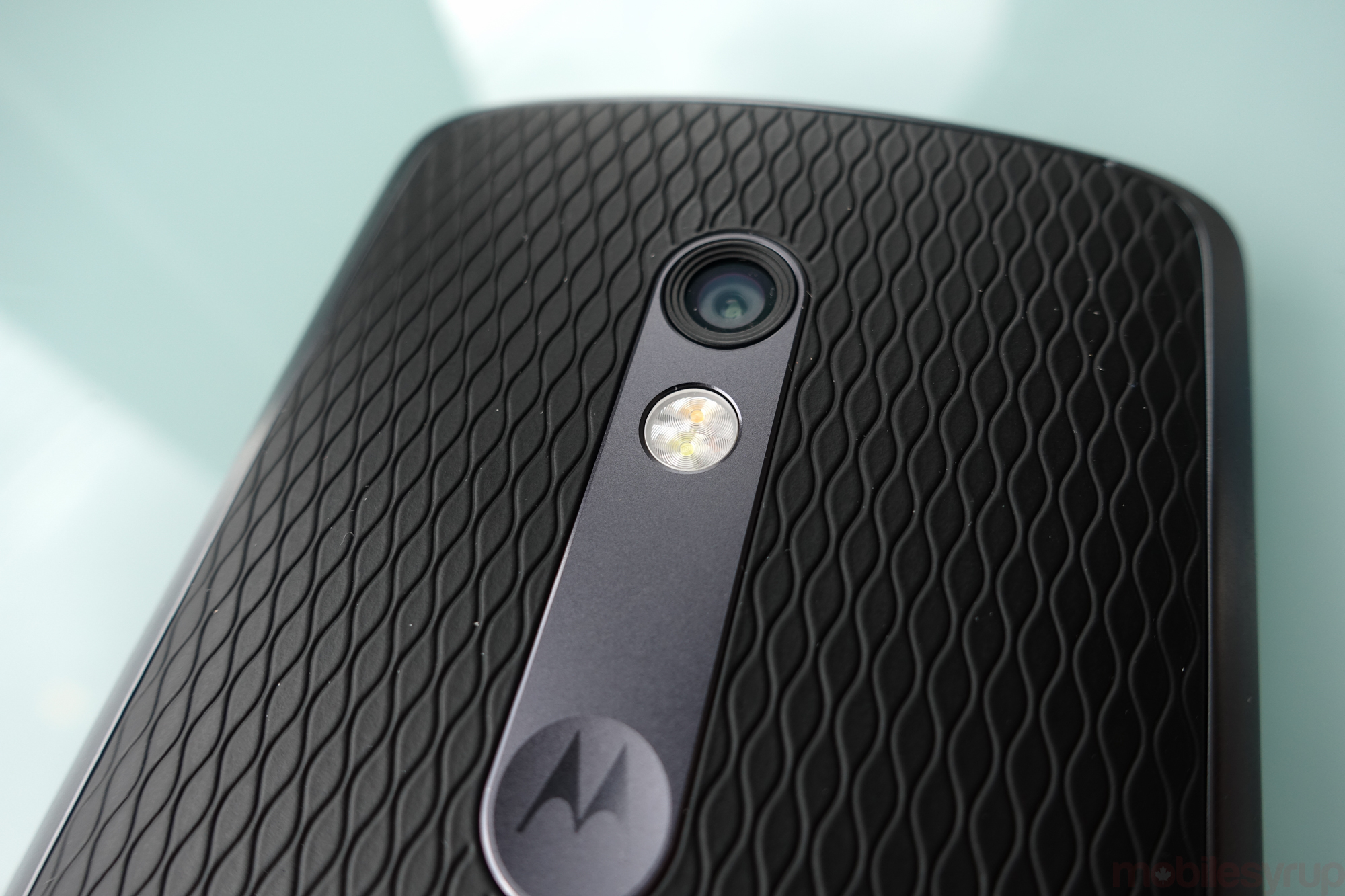
Motorola hasn’t forsaken all of the second-generation’s lavish touches, though: The strip of metal down the back that houses the camera module and Moto “dimple” feel particularly nice, and the hybrid nano SIM/microSD slot is likely aluminum. But despite the Play’s considerable heft, at 169 grams, its lineage belied a bottom-up, rather than a top-down, approach. In other words, it feels closer to a higher-spec Moto G than it does to a whittled-down Moto X Style.
That comparison is more apt when you realize the Play is the first Moto X with customizable back covers, a popular personalization feature of the Moto G that, despite being of slightly higher quality, has found its way upstream. But like those of the Moto G, adding another user-replaceable component opens the potential for misalignment and failure; acknowledging that I was using a pre-production unit for my testing, the black-coloured back that came with my Moto X Play had a slight shift to it when installed, catching dust and lint in the small crannies between the edges.
These issues are minor, but compared to the ultra-secure snaps of the OnePlus 2, LG G4 or Samsung Galaxy Note 4, those of the Moto X Play expose yet another area that Motorola skimped on the road to profitability.

Performance & Software
The Moto X Style’s absence from the Canadian market lingers over the Play in ways both tangible and abstract. Tangibly, the poor exchange rate against the U.S. dollar places the two devices at numerically even price points; the Moto X Style is $399 USD, while the Play is close to $400 CAD depending on the carrier. Alignment in words only (the Style, at that price, would cost around $530 CAD at today’s exchange rate), its absence merely reinforces the Play’s uneasy place in the market.
To wit, I spent a lot of time actually using the Moto X Play before reluctantly benchmarking it. Outside of a certain number-crunching minority, benchmarking a smartphone is an unnecessary and anachronistic experience, since both the individual apps (and games) and the platforms on which they run are less sensitive to the minutiae of small hardware changes. As we saw with the third-generation Moto G, Android 5.1.1 runs outstandingly on Qualcomm’s quad-core Snapdragon 410 chip; what reason would there be for it to run badly on the more-powerful Snapdragon 615 inside the Moto X Play?
But it was in the pursuit of noting the differences between the chips that made me ponder: is the Moto X Play fast, or just fast enough? And outside of benchmarks, which its predecessor tends to win thanks to its faster, higher-performance cores and considerably better GPU, is there any notable difference between the two in day to day usage?
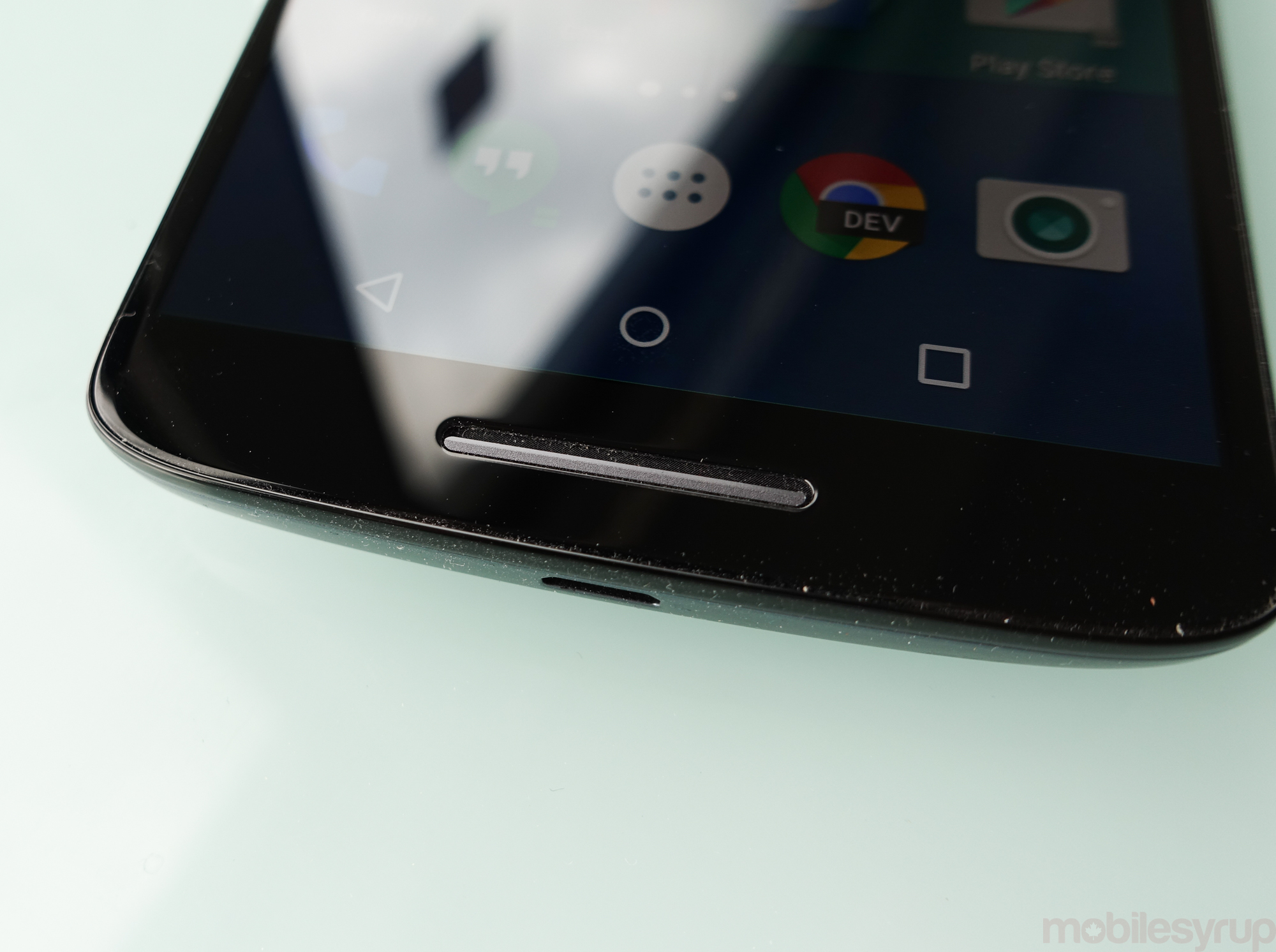
Subjectively, the Moto X Play is a well-rounded performer, with consistently quick app loading speeds and transitions between them. It rarely stuttered during my time with it, and had minimal lag when typing long swaths of text into a text box or email, something even the fastest Android devices struggle with.
GPU-intensive games such as Dead Trigger 2 or Asphalt 8 posed little problem for the Adreno 405 graphics processor, with consistently good frame rates, though the latter shuddered in scenes with many cars on screen at once.
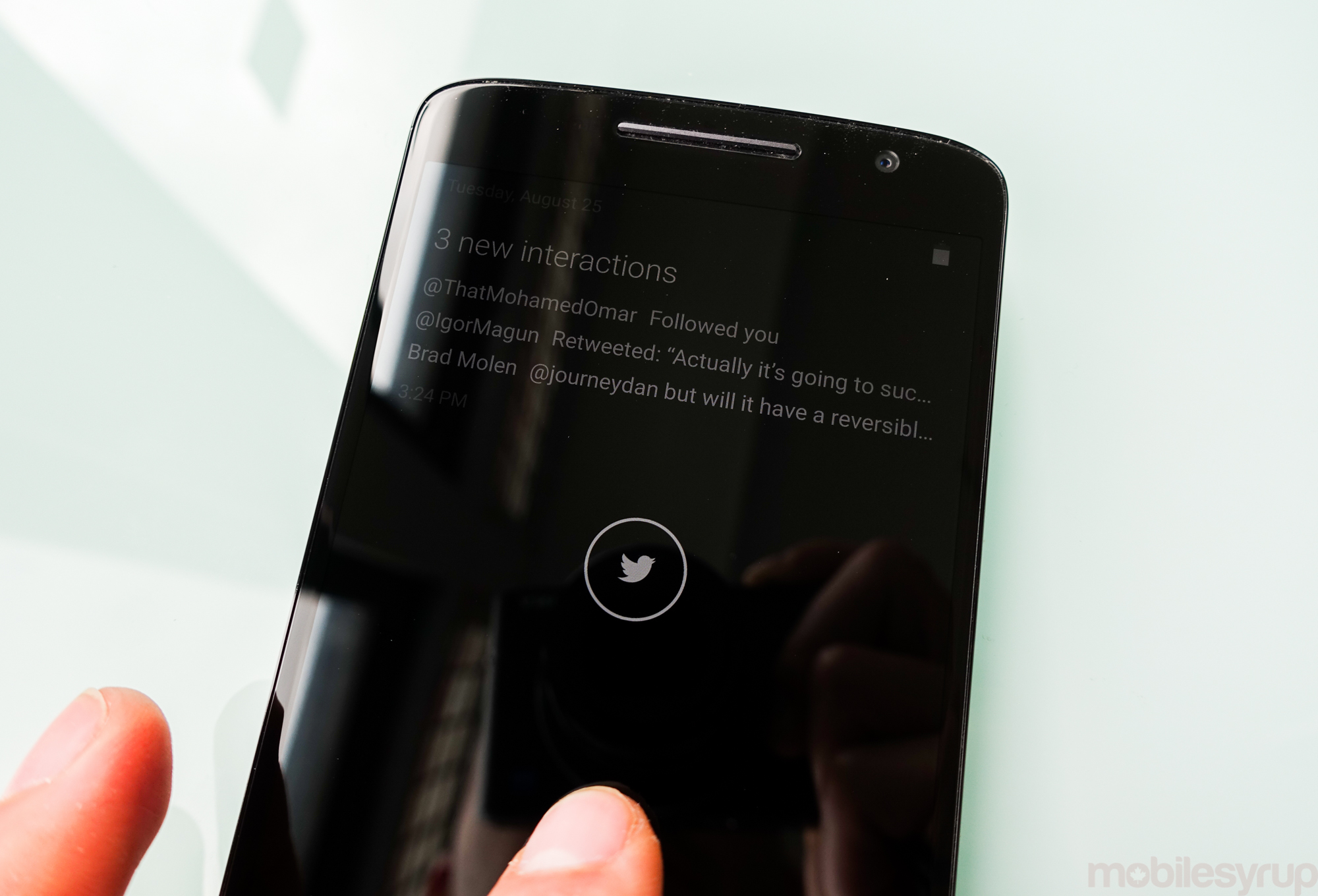
The Cortex-A53 cores inside the Snapdragon 615 chip are about two-thirds the speed per clock as the custom Krait 400 cores in the Moto X 2014’s Snapdragon 801. They’re also not designed for high-wattage applications, built instead as companions to high-performance Cortex-A57 cores inside the Snapdragon 808 and 810. The Snapdragon 615 can reach speeds of 1.65Ghz in each of its eight cores, but rarely do they get there, even under heavy load.
While the system can intelligently spread out its workload across eight cores at slower clock speeds, improving energy efficiency and battery life while ensuring consistently good real world performance, Cortex A53-based devices don’t benchmark well. That’s just a fact. And with an increasing number of Android devices relying exclusively on Qualcomm 400- and 600-series chips, this discrepancy between benchmark and real-world results will be a bugbear for the diminishing community of people that rely on benchmarks to tell them which phone to buy.
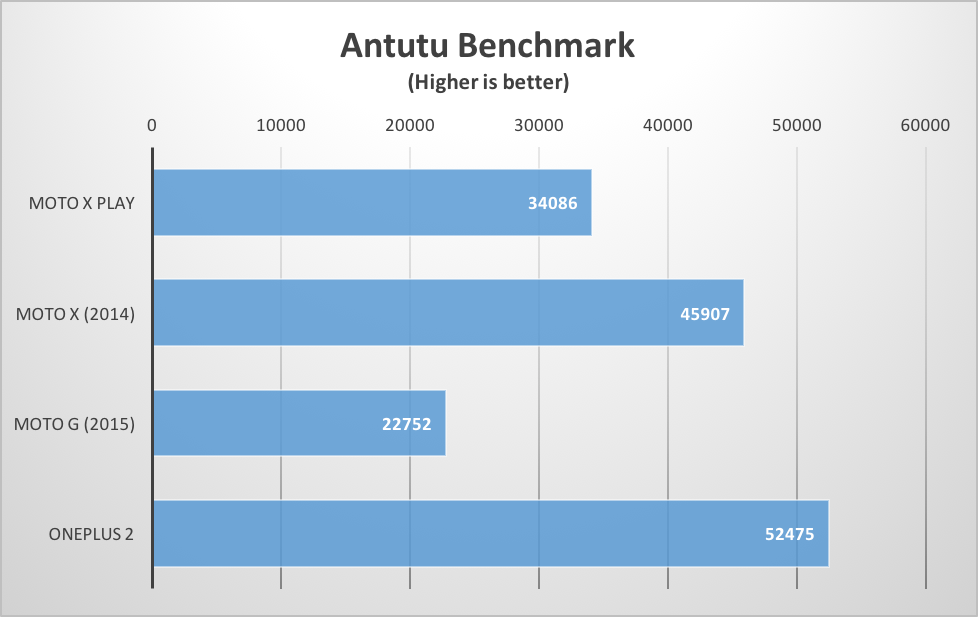
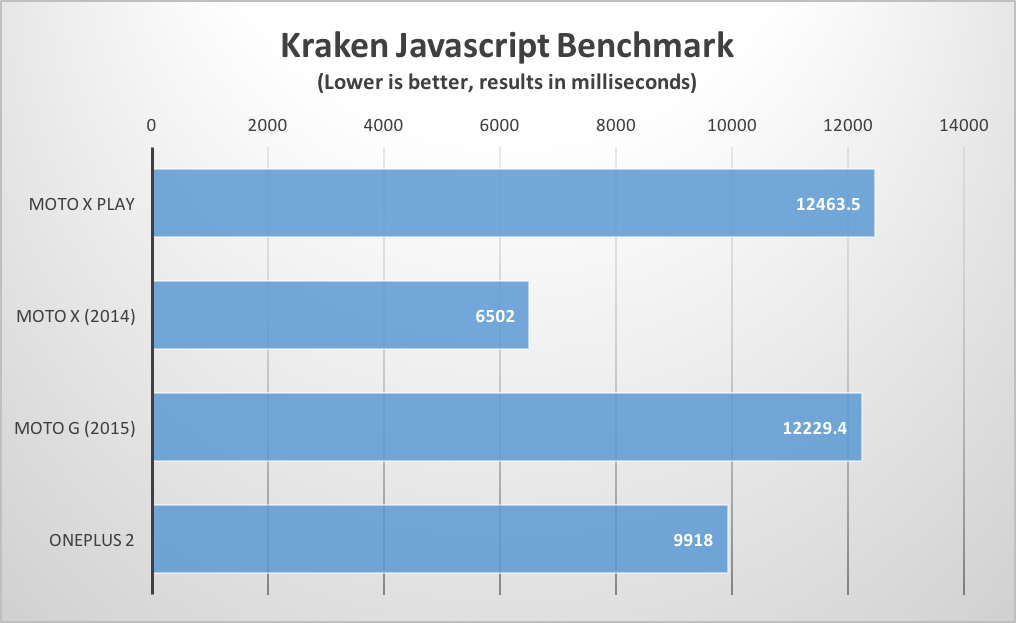
In benchmarks like AnTuTu, which tests CPU, GPU, physics, memory and storage performance, the Moto X Play held up quite well, thanks to its decent multi-core processing power and its class-leading storage speed.
Mozilla’s Kraken Javascript test showed just how sensitive it is to clock speed; even the more-powerful Snapdragon 810 inside the OnePlus 2 was a third slower than the quad-core Snapdragon 801 inside last year’s Moto X, which ran each core at a maximum of 2.7Ghz.
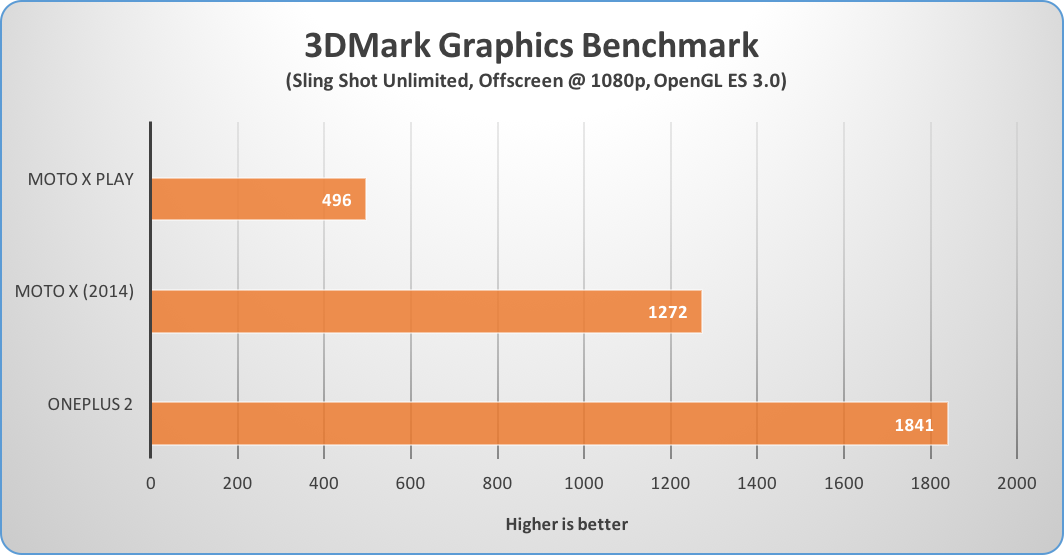
The Adreno 405 GPU inside the Moto X Play is significantly slower than the Adreno 330 found inside the Snapdragon 801. Comparing results of the new 3DMark Sling Shot Unlimited test, which renders offscreen a complex scene at 1080p to avoid discrepancies in screen resolutions, the Moto X Play was 1.5x slower than the second-generation Moto X, and 2.7x slower than the OnePlus 2, which runs a Snapdragon 810 chip.
That’s a brutal score for a device most people would expect to perform better than last year’s Moto X. If you’re looking to purchase the Moto X Play primarily for gaming, look elsewhere, or at least set your expectations accordingly.
But the reality is that the Moto X Play, as you’ll see in the next couple of sections, is a lateral move from the second-gen Moto X. It proves that the 800-series chips that began shipping in late 2013 still have a ton of headroom, and that the Cortex-A53 is little more than a souped-up Cortex-A7. On their own, the cores are underpowered, but in combinations of four or eight manage to make Android fly. That won’t, and shouldn’t, matter to the average consumer, but it’s something to keep in mind.

Motorola has elected to continue its low-overhead Android strategy, releasing a device with Android 5.1.1 and little else. Of course, Moto Display is still here, but it lacks the infrared sensors of last year’s device to more quickly detect when a hand is nearby; you have to nudge or pick up the device to check notifications, rather than waving your hand over it. It’s a small but crucial omission, since I used that feature all the time.
Moto Voice is back, too, and as useful as ever — if you’re into that sort of thing. Me, I don’t “OK Moto X” my phone outside of proving its efficacy to friends and family, but having access to Google Now from anywhere is a luxury one shouldn’t take for granted. As Google Now improves, so too does Moto Voice.

Motorola hasn’t really improved the software experience on the Moto X line this year, and any updates made to the core Moto app, which controls Voice, Actions, Display and Assist, have already filtered down to the older devices.
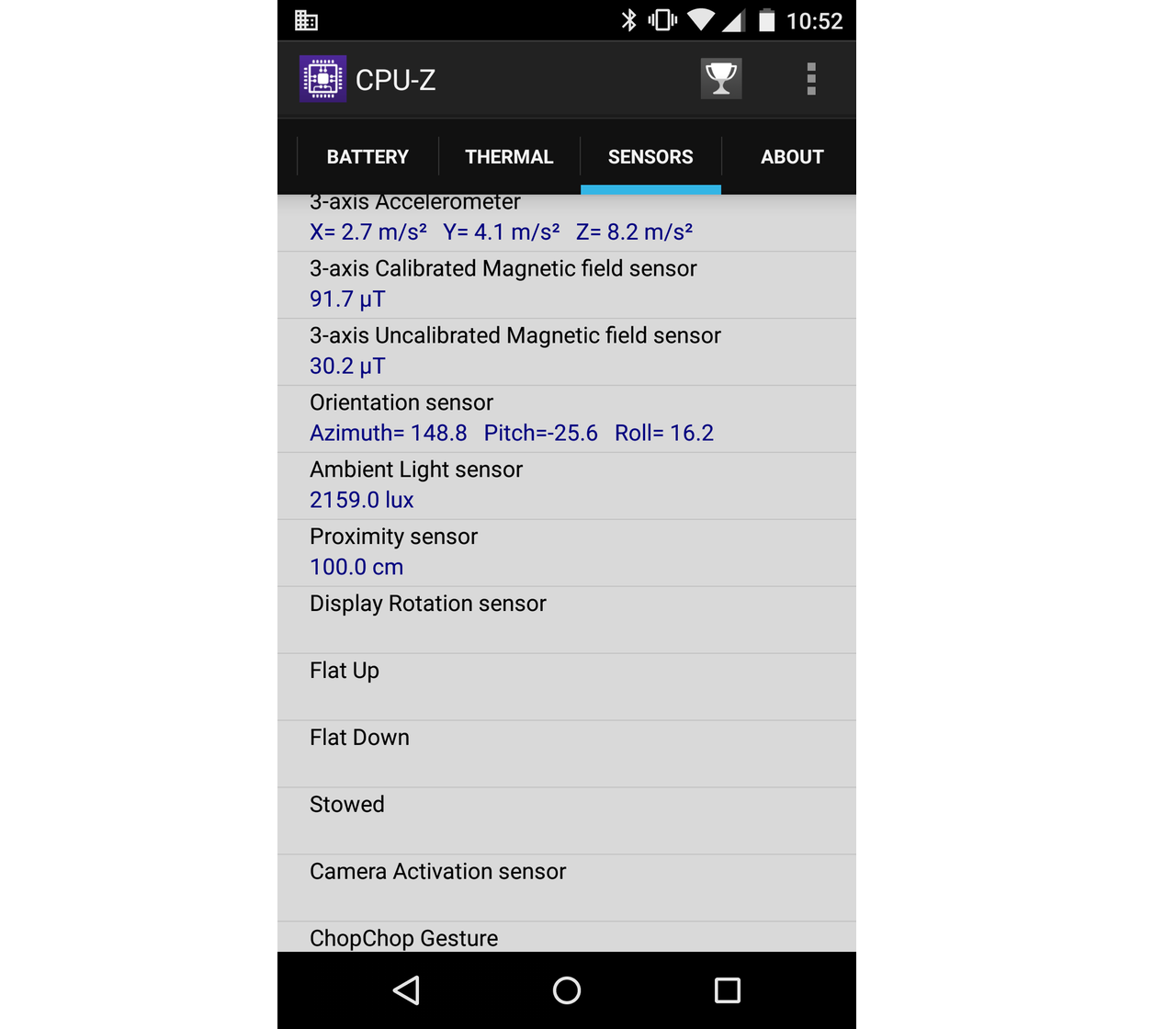
One of the more useful gestures added to the Moto X last year has since been removed on the Play: the ability to “chop” the phone twice to quickly turn on the rear LED for use as a flashlight. CPU-Z confirms that Motorola intended for the feature to be included — the words ChopChop Gesture are explicitly visible in the “Sensors” tab of the useful app — but it is nowhere to be found elsewhere.
Motorola also didn’t deem it necessary to add a gyroscope to the Play, which helps orient the device while navigating. Separately, these exclusions are minor, but together speak more to the way it appears the Play was designed: build an expensive smartphone and remove any non-essential pieces to hit a particular price point.
Camera
So far, we’ve learned a couple of things about the new Moto X: it doesn’t feel quite as expensive as last year’s model, but it runs just as well despite a lower-powered processor.
But few people complained about the phone’s performance or its screen. Most reviews, including mine, harped on the phone’s camera (and its battery life, which we’ll address next). Thankfully, if this is the calibre of photo we can expect from the future of Motorola, I’m a happy camper. In short, the Moto X Play takes superb photos in nearly every situation.
As we saw in our photo comparison with the Galaxy S6, Samsung’s flagship is more intelligent, correctly exposing the scene more often than the Play. But Motorola’s fundamentals — the quality of its sensor and its optics — are night-and-day better than last year. Indeed, I can safely say that this is the first Motorola smartphone I’m able to pick up and just use without worrying about the outcome.

I’ve confirmed with Motorola that the Play also incorporates Phase Detection Autofocus, a method of focusing that ensures accuracy and speed in most lighting conditions. Unfortunately, focusing is an area where the Play still lags, figuratively and literally, behind the competition. There were times where tapping the screen, which is the only way to trigger the shutter, would not yield an actual photo for upwards of a second, missing entirely the subject I was tracking.
Worse was when, using the manual exposure and focus ring, the device would slow the shutter to blur-inducing speeds despite the presence of ample natural light. The complete lack of manual controls, in either the default camera app or through third-party sources using the Camera2 API, compounds the issue. Companies like Samsung and LG have learned from their user base that manual controls are important, while Google itself bundles a super-simple camera app with its Nexus phones but opens up pro-tool access to users who want it.
In other words, Motorola has a lot of work to do in terms of IQ, but those issues are correctible in software.
The samples speak for themselves. At around $400 outright, the Moto X Play is just about the best camera you can get in its price range, a sentence I never thought I’d write about a Motorola phone. You can argue that devices like the Galaxy S5 and LG G3 are competitive for the price, but they’re last-generation devices that won’t receive updates as quickly as the Play. Moreover, the Play’s 21MP shooter doesn’t sacrifice fidelity for detail like Sony’s Xperia lineup.
The Galaxy S6 and Note 5 are considerably better at taking consistently good photos, but they’re also twice the cost. At the moment, the Moto X Play has few peers in its price range; Motorola just needs to get its software act together.
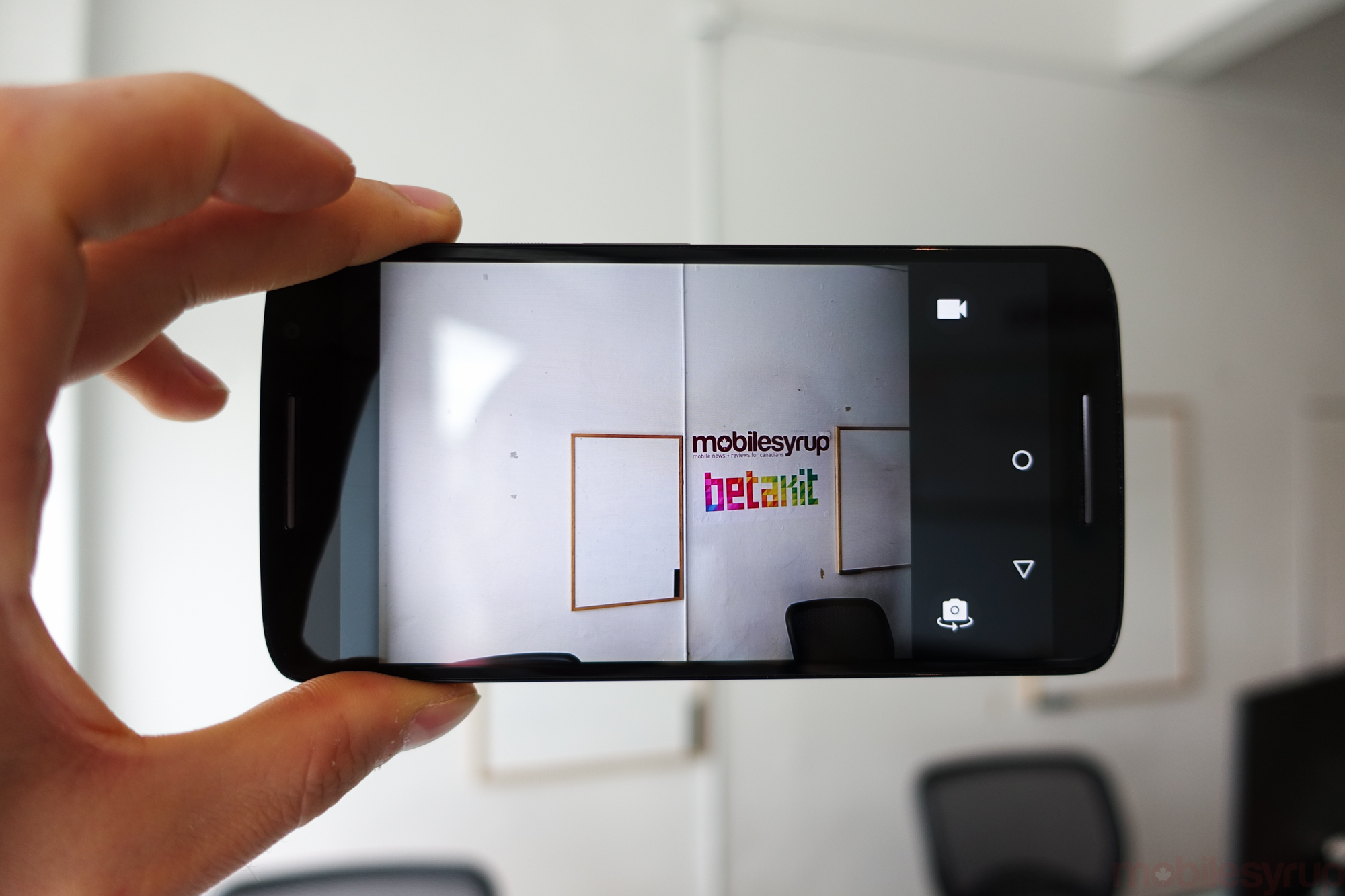
While we’re on the subject, the phone also has a decent Night Mode setting, which amps up the light sensitivity to a maximum of ISO 2500. Low-light performance is decent, and with a steady hand photos can be quite usable, but a lack of optical image stabilization coupled with Motorola’s conservative shutter speed limits means that long-exposure photos are out of the question. Disappointing, since I think the sensor has the chops.
On the video side, the Moto X Play captures 17Mbits 1080p footage at 30fps, which is about par for a phone of this ilk. It appears that Motorola paid far less attention to the video capture capabilities of its latest Moto X, since I found focus inconsistent and footage shaky. The phone also has a 10Mbits 540p Slo-Mo mode which captures video at 120fps and slows it to 30fps for the finished product.

Battery Life
Here we get to the good stuff. The 3,630mAh battery inside the Moto X Play is objectively massive compared to other devices its size, and it’s particularly noteworthy when paired with the power-sipping Snapdragon 615 chip.

Let’s get this out of the way: the Moto X Play has superb battery life. I used it every day for over a week and only once, after navigating with Google Maps for over two hours, did I have to charge it before bed.
Technically, I could use the phone for two days if I took it easy, but that’s a facile argument since daily charging is a reality for the vast majority of people. More important is whether you can leave the house at 8am for work and trust it to last through dinner, drinks and maybe a late-night snack.
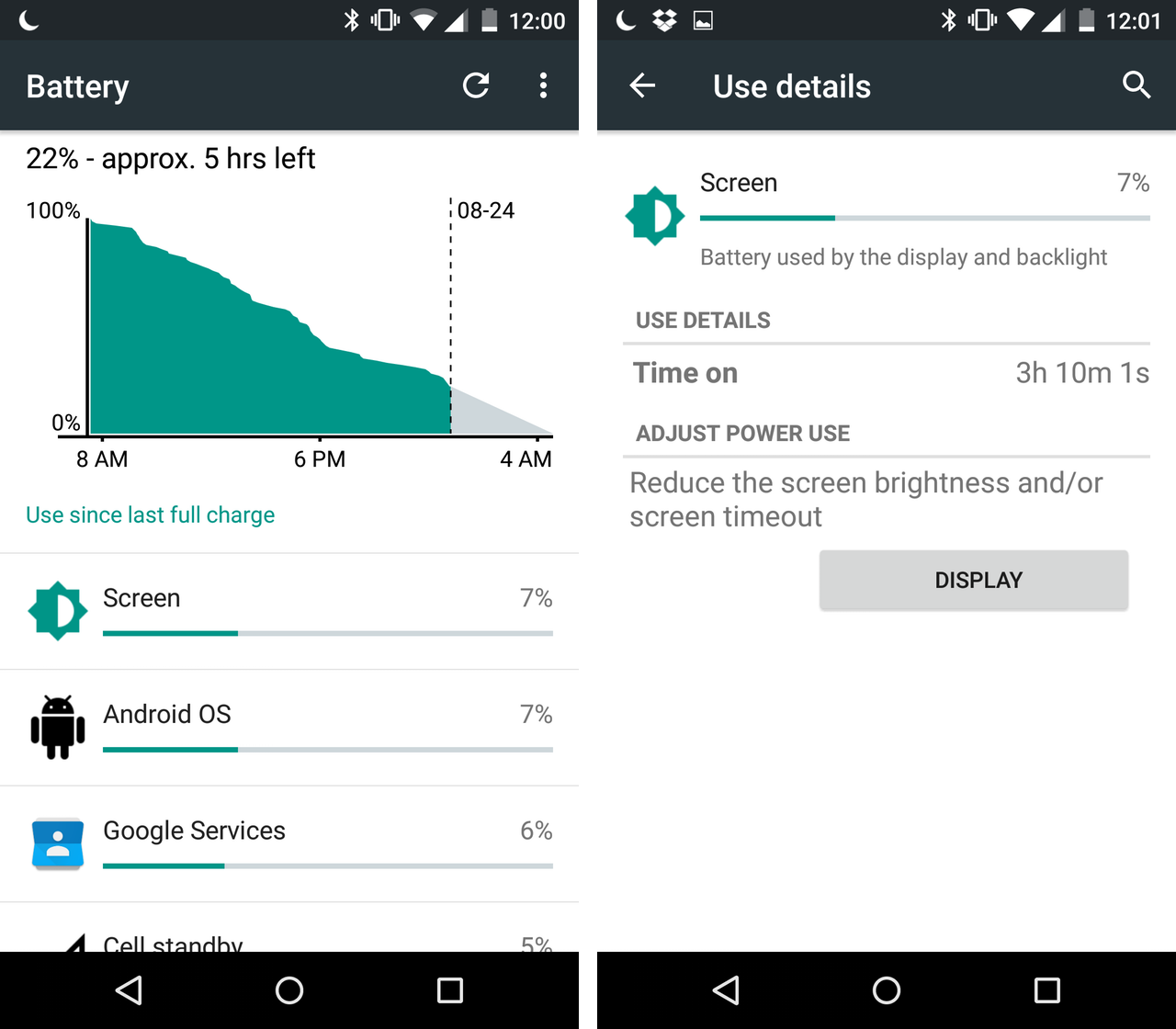
More rigorous testing found that the Moto X Play lasted 13.5 hours in our looping video test, which set the brightness at 200 nits and keeps the phone connected to a WiFi network. That is nearly double the length of the second-generation Moto X, and near the top of our list alongside the massive Huawei Ascend Mate 2 and iPhone 6 Plus.
Clearly, Motorola learned its lesson from last year’s Moto X, but it’s also apparent that the success of the Verizon-exclusive Droid Maxx series inspired the company to differentiate through uptime.
A large battery usually means a long wait for recharging, but Motorola has bundled Qualcomm’s Quick Charge 2.0 spec alongside its own proprietary fast Turbo Power pseudo-standard, shortening the time it takes to bring the Moto X Play from dead to full to around two hours. Only Telus and Koodo actually bundle the Turbo Charger (it costs $15 to $25 on its own, depending on the source), but it’s well worth the investment.
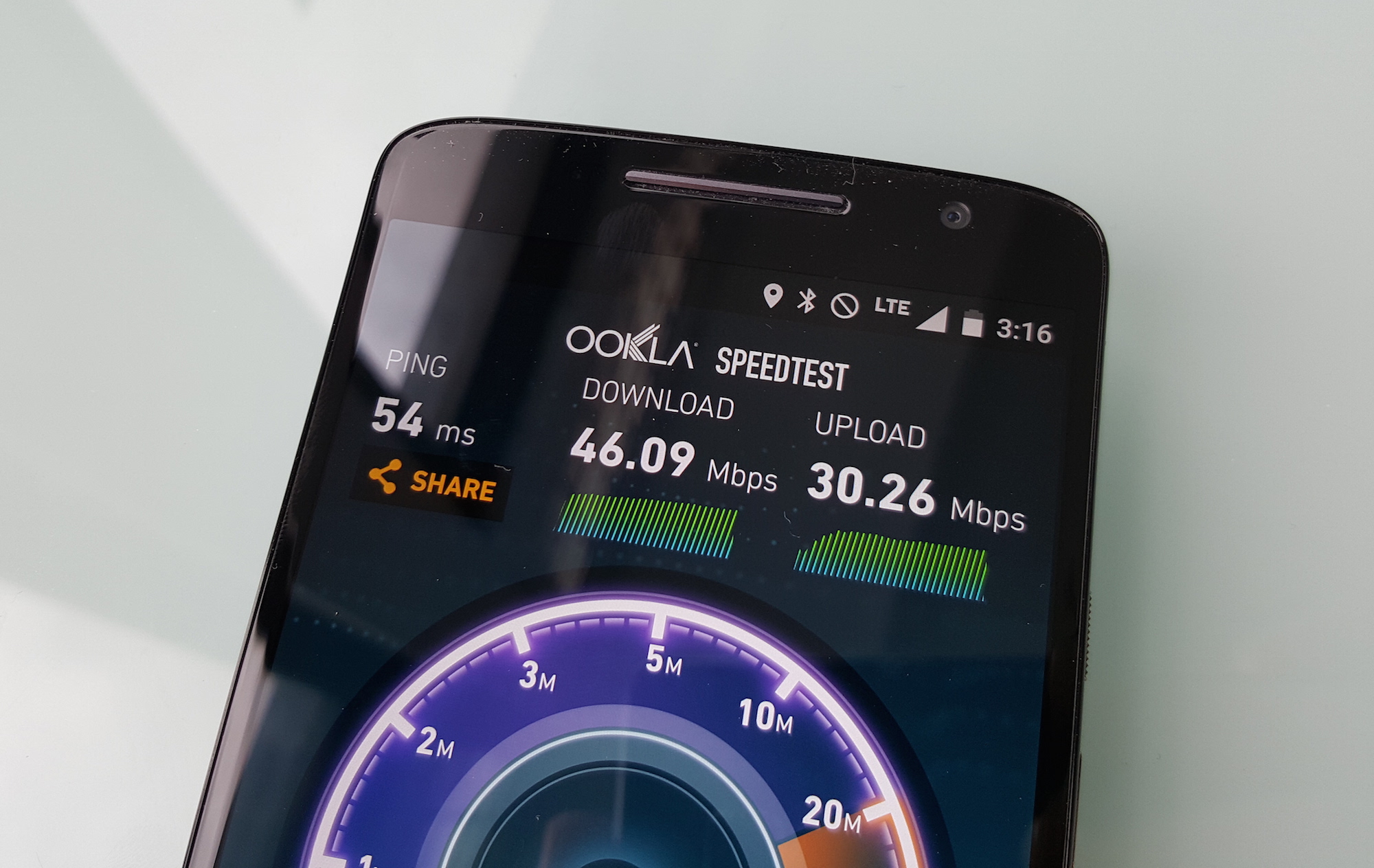
Connectivity
The Moto X Play is capable of achieving theoretical speeds of 150Mbps, but speeds of 40Mbps to 50Mbps were more common with the Telus network on which I tested the phone.
Like practically every Motorola device, it sounded great during the few phone calls I made. Sound from the single front-facing speaker (on the bottom) was loud but insubstantial, capable of reproducing music thinly. Basically, it’s a typical smartphone speaker, slightly advantaged by pointing towards one’s ears.
It’s interesting that after employing dual front-facing speakers on last year’s Moto G, neither the third-generation G nor the Play have the same feature; only the Moto X Style, which isn’t coming to Canada, has them.
Finally, the Moto X Play is the first X-branded Motorola device with a microSD slot, which helps (somewhat) alleviate the perennial issue of having only 16GB of internal storage. As I said in my Moto G review, where the issue was exacerbated due to having only 5GB of usable storage out of the box, Android 5.1.1 treats expandable storage with reluctant respect: it’s possible to manually transfer some apps and games, but Motorola doesn’t automatically do so.
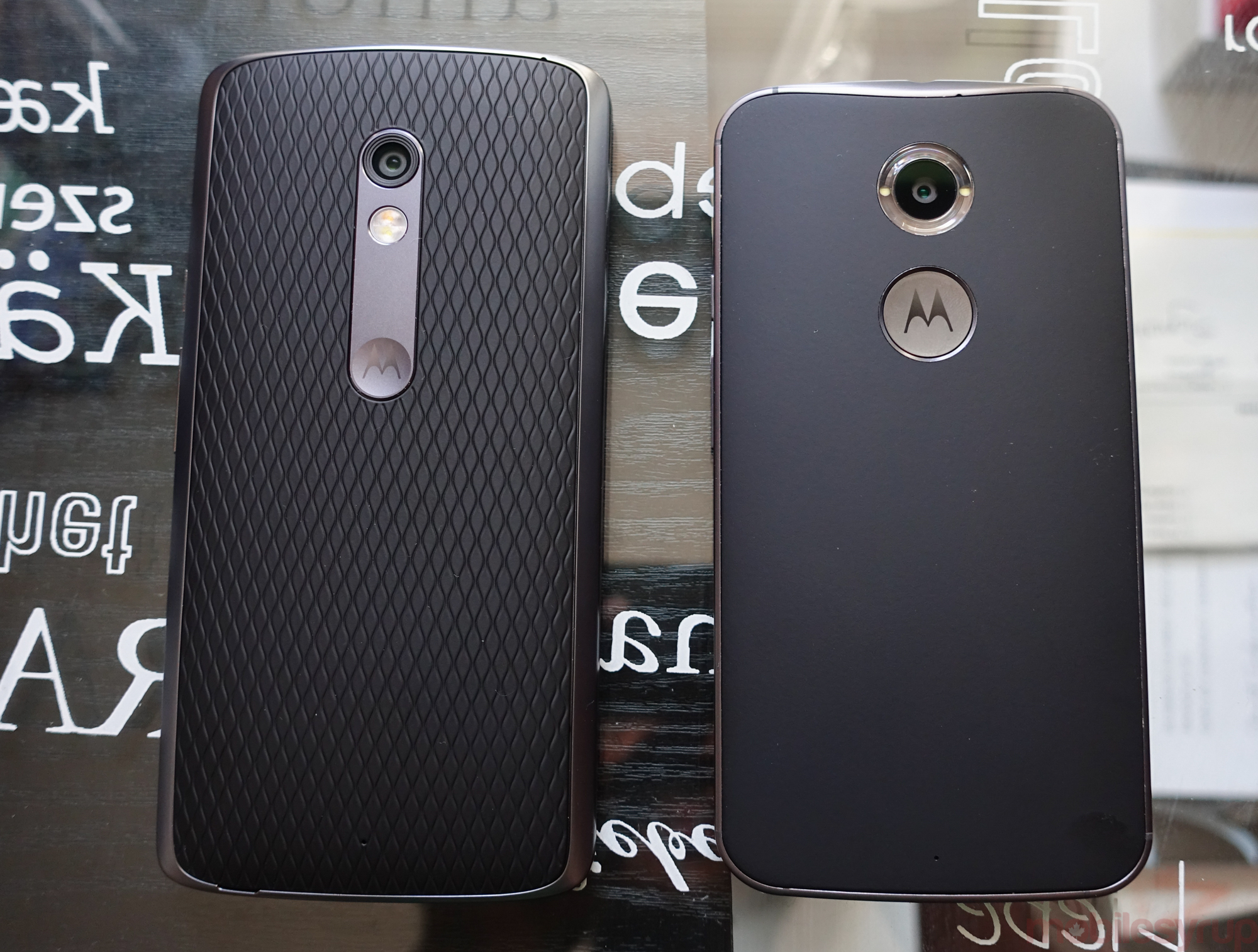
Competition
The Moto X Play doesn’t exist in a vacuum, and around the time of its release OnePlus released its excellent sequel (review coming soon), the OnePlus 2.
At the same time, there is a bevy of $300 to $400 devices on the market that give the Moto X Play a run for its money, not the least of which is Motorola’s own last-gen Moto X, which is now available unlocked from Staples.
Other devices that run in the same price range include the Alcatel OneTouch Idol 3 and the Sony Xperia M4 Aqua, both of which have redeeming qualities but are ultimately felled by the Play’s superior camera and battery life.
Similarly, the Asus ZenFone 2 offers more power with Intel’s new Atom Z3580 chip, and the option of buying a model with 64GB of storage and 4GB of RAM, but the Play beats it in every other way.

Conclusion
It takes a lot of words to write about the Moto X Play, because we’ve reached a terrific and transitional period in the smartphone ecosystem. Not only do you no longer need to spend $700 for a high-quality smartphone, but there are tiers even within the middle range of the market.
The Moto X Play is the current leader of that small stack, eschewing the pure power and typical metal construction of its high-end counterparts. But it’s also a phone full of compromise. Its battery is tremendous, and its camera a world away from its predecessor’s. But its lower base price is felt in its plastic construction and vexing exclusions.
There are a lot of reasons to buy the Moto X Play, especially if price to performance is your key metric.
Pros
- Excellent performance for the price
- Well-designed chassis
- Best-in-class camera
- High-quality 1080p LCD panel
- Expandable storage
- Incredible battery life
Cons
- Plastic feels cheap, especially the buttons
- No 32GB option
- Weak front-facing speaker
- Dust catches in between display and frame
- No gyroscope
MobileSyrup may earn a commission from purchases made via our links, which helps fund the journalism we provide free on our website. These links do not influence our editorial content. Support us here.



